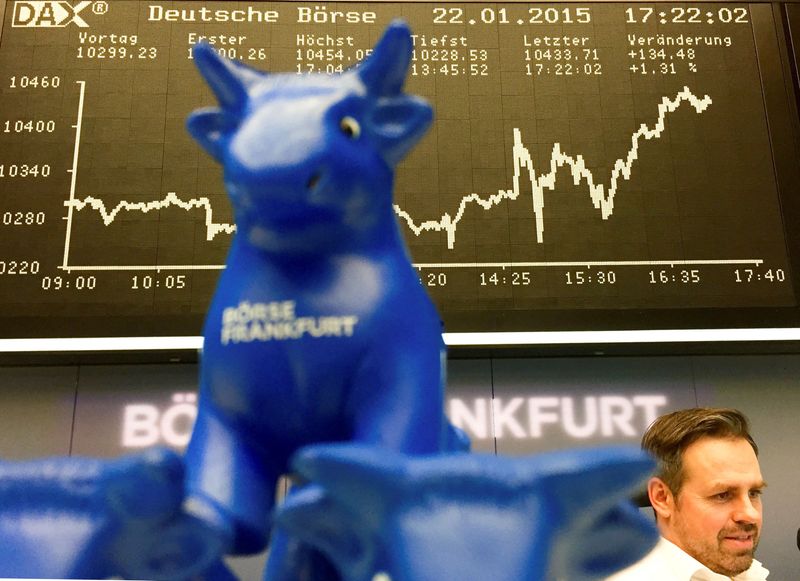By Peter Nurse
Investing.com - European stock markets are expected to open lower Friday, as investors digest the European Central Bank’s larger-than-expected interest rate increase ahead of the release of fresh survey growth data.
At 02:00 AM ET (0600 GMT), the DAX futures contract in Germany traded 0.3% lower, CAC 40 futures in France dropped 0.6%, and the FTSE 100 futures contract in the U.K. fell 0.4%.
The ECB raised interest rates by 50 basis points to zero percent on Thursday, its first hike in 11 years, ending a policy of negative interest rates that had been in place since 2014.
The hike was more than the 25 basis points increase that ECB President Christine Lagarde guided towards at the central bank’s June meeting, suggesting that the policymakers have become very concerned about inflation, with Eurozone CPI now at a record annual 8.6%, even at the expense of growth in the region.
Fresh PMI survey data for the Eurozone is scheduled for release later in the session, and this will provide clues over how the region’s companies are coping with the current economic environment.
The key German manufacturing PMI release is expected to fall to 50.6 in July from 52.0 the previous month, remaining barely in expansion territory.
U.K. retail sales fell by 0.1% on the month in June, slightly better than expected, but still, an annual drop of 5.8%, as U.K. consumers reined in their discretionary spending in the face of a cost of living crisis.
In corporate news, Norwegian aluminium-maker Norsk Hydro (OL:NHY) said it would propose an extra dividend and offer share buybacks as it reported upbeat quarterly profits.
Swiss elevator and escalator manufacturer Schindler (SIX:SCHP) cut its revenue guidance for the full year, citing China market contraction and COVID-related lockdowns.
Swiss chemicals maker Sika (SIX:SIKA) reported an 18% jump in its first-half sales on Friday, supported by a post-pandemic recovery in the construction sector.
Oil prices edged higher Friday, as traders see value after recent selling on the back of weakened demand in the United States, the world’s largest consumer of crude.
Data released earlier this week showed that U.S. gasoline demand had dropped nearly 8% from a year earlier in the midst of the peak summer driving season, and this weighed heavily on the WTI contract.
In contrast, the Brent benchmark is on course for its first weekly gain in six weeks, helped by strong Asian demand.
By 02:00 AM ET, U.S. crude futures traded 1% higher at $97.28 a barrel, while the Brent contract rose 1% to $104.92.
Additionally, gold futures traded flat at $1,713.40/oz, while EUR/USD traded 0.4% lower at 1.0190.
